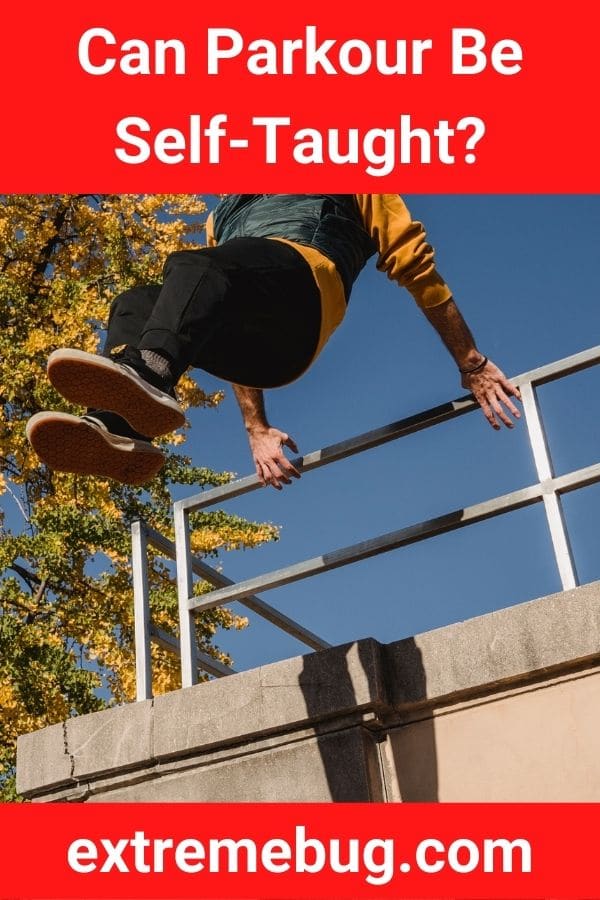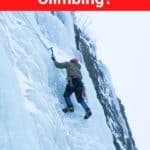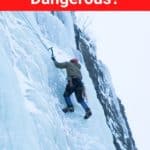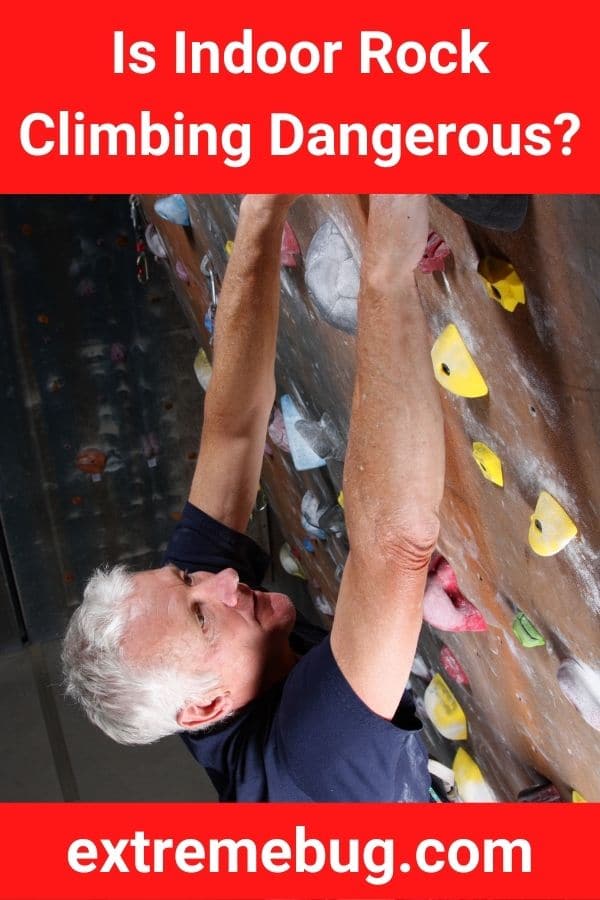Whenever I see a video of someone doing parkour, I am in awe of the agility and strength that they possess.
Climbing up walls, jumping between roofs, and backflipping off of walls are moves straight out of a movie stunt scene and incredible to watch.
Despite this, I never really thought about whether or not you could teach yourself parkour… until I watched The Office. Michael Scott, Dwight Schrute, and Andy Bernard were my inspiration to find the answer to this burning question.
Their skills were subpar, but they made me wonder if you could teach yourself and become any good.
Can parkour be self-taught?
Yes, parkour can be self-taught. Through patience, persistence, and practice, you can teach yourself parkour without ever paying for a trainer or taking a class. Parkour, like any sport, is best learned by getting out there and doing it.
How long does it take to learn parkour on your own?
What are the first steps to training for parkour?
How do you safely practice parkour while teaching yourself?
We will explore all of these questions and more so you can get started on your new hobby!
So, let’s get started:
How long does it take to learn parkour on your own?
Overall, it could take anywhere from a few weeks to a few months (or longer) to teach yourself the essentials of parkour.
The amount of time that it takes to learn parkour on your own is highly dependent on a few different factors:
Overall Fitness
Your overall level of fitness plays a large role in how quickly you can teach yourself parkour.
A foundation of good cardiovascular fitness and muscle strength will make many of the fundamental moves of parkour much easier to perform.
Natural ability
Some people are naturally talented at athletic activities and can pick up new sports faster than their peers.
If you are one of these people, learning parkour may come quickly to you.
Amount of Practice
Teaching yourself parkour will take less time if you stay consistent in your training and practice almost every day.
Inconsistency may increase the time it takes to learn the basics of parkour by weeks or months.
The same thing applies to improve existing skills.
Why would you want to learn parkour on your own?
You may be wondering, “Why would I want to learn parkour on my own? Aren’t there coaches for this?”
You are correct, there are coaches and classes for parkour.
However, like any other coach or class, they cost money and are on a set schedule.
Learning parkour on your own can help you dip your toe into a new hobby without any financial investment, and you can do it on your schedule.
Teaching yourself parkour is ideal for people who have inconsistent work or school schedules, do not want to commit to a set class time, or want to save money.
How do you begin to train for parkour if you are teaching yourself?
It is beneficial to improve your fitness outside of parkour since parkour utilizes a combination of muscle strength and cardiovascular fitness that is hard to obtain without cross-training.
It is also recommended that you work on your flexibility to decrease the risk of injury while practicing.
Flexibility can help you complete some parkour moves more easily if they require bending your body in an unusual way.
You do not have to be in peak physical condition to begin teaching yourself the essential parkour moves.
Learning the basics of parkour will also help to improve your fitness levels.
A combination of multiple forms of exercise will maximize your ability to improve your skills over time.
What are the easy and essential parkour moves for beginners if you are teaching yourself?
There are a few parkour moves that you should teach yourself and master before others since they are essential to the sport and the bases to more difficult moves.
Landing
Landing properly and safely will keep you from injuring yourself when learning parkour.
There are a couple of different ways to land depending on the height of the drop, the distance of the jump, or the texture of the surface.
Two-footed landings are easier on your body and joints than one-footed landings as long as they are done properly.
Your knees should bend and go over your toes when you land, but they should not bend more than 90 degrees.
Rolling is another landing maneuver that can soften the impact of a drop or jump.
Tucking your head and rolling diagonally across your back is the safest way to complete this landing.
If done correctly, you will be able to complete your roll and stand up smoothly.
Jumping
Jumping is used to move over an obstacle or bridge the distance between two, as well as move from one surface height to another.
Precision jumping is used to land on objects with small surface areas and requires good balance and spatial awareness.
Developing this skill will help you to travel over surfaces without many footholds or places to step.
Vaulting
Vaulting allows you to move over obstacles that you would not be able to clear by simply jumping over them.
The most basic vault is called the step vault, or safety vault, and is the first building block to all other vaults.
It involves placing both of your hands on the obstacle and pushing off of the ground to swing your legs up and over it.
Climbing
Climbing is useful for obstacles that you cannot get past by jumping or vaulting.
However, it is important to not attempt to climb obstacles that are too high when you are beginning to teach yourself parkour.
Do not climb any higher than you can safely drop or jump down.
Wall running is a basic form of climbing, and you have probably seen people attempt it a few times.
It is more difficult than it looks, but with some practice, it becomes a handy move to add to your arsenal.
Where can you practice parkour on your own?
Where can you practice parkour on your own if you do not have a trainer or access to a gymnasium?
Luckily, there are a few public spaces that make great training grounds for beginners.
Playgrounds
Playgrounds make a great practice course.
Monkey bars, pull-up bars, and other obstacles can help you train your landing, vaulting, and climbing skills.
A bonus is that playgrounds usually have soft bark or cushioned ground that can help prevent injury if you fall.
If you train on a playground, be courteous to others, and do not train while kids are using the structure.
Universities
Colleges and universities have an abundant amount of concrete structures and railings that you can use to practice parkour.
Walls, stairs, and benches are just the beginning of the list of items available to use.
If you practice on a campus, be aware of your surroundings and students who are passing.
Urban Areas
A good way to find parkour spots where you can practice on your own is by exploring urban areas.
Many public places can be used to practice at least one parkour skill. People have used schools, plazas, fountains, and other places to train.
What gear is needed for parkour if you are teaching yourself?
Teaching yourself parkour is not only a fun hobby but a cheap one.
Almost no special gear is needed to train.
However, you should have the appropriate shoes.
The shoes need a lot of traction and flexibility to ensure that you have a good grip and to minimize your risk of slipping.
Ideally, the cushioning of the shoe should be thick enough to absorb shock when you drop or land, but not so thick that it affects the flexibility of the shoe.
Light-weight, breathable clothes are best for practicing parkour.
You want to be sure that you have a full range of motion of all of your limbs and that you can move easily.
How can you stay safe while teaching yourself parkour?
Safety is extremely important when teaching yourself parkour.
This article has already outlined a few safety measures, but let’s review them and add some more.
Master the Basics
Make sure that you know how to safely drop and land from different heights before attempting any other moves.
Be sure to progress to more difficult moves only after becoming comfortable with the easier ones.
It is also important to learn proper falling techniques to prevent injury if you misstep or fall.
Use a Mat
Use a gym mat or mattress if you are attempting a new move like vaulting or jumping between objects that are higher than your own height.
Practice During the Day
Practice during the day in a public area so that you can get assistance if you need it.
Also, you can see better and your depth perception is more accurate in daylight than at nighttime.
Avoid Bad Weather
Do not practice parkour in the rain or snow.
This will increase the likelihood that you will slip.
Grab a Friend
Invite a friend or join a hobby group to practice with other people.
People with more experience in parkour can give you feedback on proper technique and help you make improvements.
Practicing with a group also ensures that there is someone to help you if you injure yourself.
Learning Flips
It is highly discouraged that you attempt to perform flips, especially when you first begin teaching yourself parkour.
Flips are an exception to the no coach and no class needed mindset.
This is a move that should be learned under professional supervision.
What are the pros and cons of teaching yourself parkour?
Now we’ve gone over how to begin teaching yourself parkour, the first moves to learn, where to practice, and how to stay safe.
What are the overall pros and cons of teaching yourself parkour?
Pros:
Improves fitness and balance
Low or no cost to start
Flexibility of practice time and place
Learned skills can be useful in other circumstances
Meet new people through hobby groups
Fun and exciting
As you can see, the pros of teaching yourself parkour are pretty hard to beat.
You can start a fun, new hobby at no cost that improves your overall health and helps you make new friends!
So, what are the cons?
Cons:
Harder to teach and critique yourself
Less safe than working with a coach
Weather affects when you can practice
Finding hobby groups
The major cons of teaching yourself parkour are decreased safety and possible difficulty in figuring out how to improve.
By following basic safety guidelines, you can decrease your likelihood of injury, and joining a group will help you get the feedback you need to improve.
Yes, parkour can be self-taught.
It is a great activity for fitness and fun without breaking the bank.
If you decide to teach yourself parkour, take all the necessary safety precautions, and start slow.
Take advantage of hobby groups and practice with friends, and soon you will be well on your way to becoming a parkour pro.







